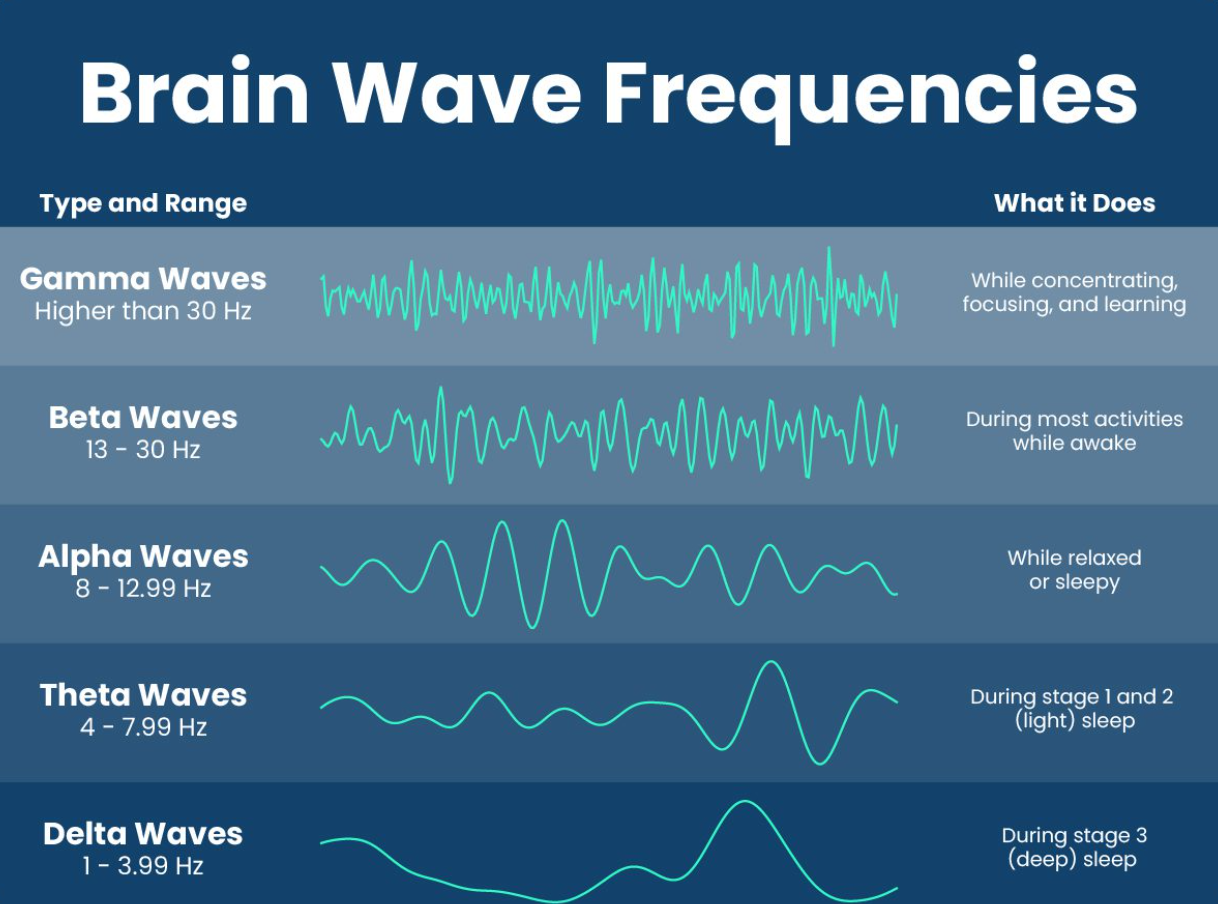
Chart source: sleepfoundation.org
It starts with brainwave entrainment!
“Brainwave entrainment” occurs when exposure to audio, visual, or tactile stimuli occurring at a certain rhythm causes brainwaves – electrical oscillations in the brain – to synchronize with that rhythm. In the case of audio stimuli, we talk about frequency, the number of sound waveforms produced in a second, measured in hertz or HZ, where 1 Hz equals one waveform or cycle per second. Most of us may not think about Hz on the daily, but we are familiar with the idea that high-frequency sounds are high-pitched (think whistles!) and low-frequency sounds, like the rumble of thunderstorms, are the opposite.
Here’s the magic of entrainment for sleep. Different phases of sleep are associated with different frequencies. Alpha waves, kind of a mid-frequency sound, are generated during drowsy and relaxed states, such as falling asleep, while during deep sleep, the very slow, low delta waves take over. We compose our soundtracks with just those frequencies because by hearing them, the baby’s brain will be encouraged to entrain itself to those cycles, helping the baby fall and stay asleep. We have a few other neuroscience tricks that we work into our tracks – slower beats and more complex instrumental arrangements, which are also conducive to sleep. And, the icing on the cake of using all this neuroscience to help babies sleep? It can work for parents, too!
